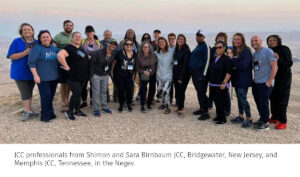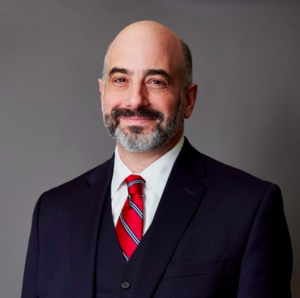
By Doron Krakow

A common question among JCC leaders is: “Are we a movement?” The Merriam-Webster dictionary definition of a movement is: “a series of organized activities working toward an objective; also: an organized effort to promote or attain an end.”
As a product of Young Judaea, the Zionist youth movement, I was inured from a young age to the idea that movements attempt to achieve great ends by mobilizing growing numbers of adherents to proceed together, often in a counter-cultural way, in pursuit of a common objective for the greater good. Recent history provides a litany of notable examples of successful movements, including civil rights and women’s suffrage. The communist movement, inspired by Karl Marx and led by Vladimir Lenin and Leon Trotsky, is another, though it enjoyed more time-limited success.
Among Jews, the Zionist movement is perhaps the most extraordinary example. Having begun in the latter part of the 19th century, by the middle of the 20th century it had established the first independent Jewish state in nearly 2,000 years.
The basic elements of such ideological movements include humble beginnings and a small cadre of committed leaders seeking to energize and inspire allies and partners prepared to go against the grain in pursuit of something better. Success is a function of determination and grit, of readiness to overcome disappointment, to build on incremental successes, and to retain an unflinching commitment to achieve the intended outcome. Another common factor is time. Progress comes in increments—and real success can take years, decades, or more.
So, does the work of the roughly 170 JCCs across North America constitute a movement?
At a time of markedly diminishing participation by Jews in organizations that have long defined our community, JCCs today welcome more Jews in person each week than other institutions—and more than at any other time in our long history. Those who pass through our doors reflect every facet of Jewish demography—from infancy to old-age, ultra-Orthodox to totally secular, and every letter of the identity alphabet. JCCs are, quite simply, North America’s largest and most diverse platform for Jewish engagement.
JCC leaders are increasingly outspoken about their commitment to a shared vision of greater Jewish community and more vibrant Jewish life. In a period of unrivalled individual Jewish success and achievement, broadly speaking, we’re scuffling in the face of our prosperity. A commitment to something better requires an expectation of quantifiable success—hence the growing drumbeat that JCCs are, individually and collectively, committed to measurable and intentional Jewish outcomes that define “greater Jewish community.”
The broad strokes are there. Shared vision and common cause. Last week provided me with an opportunity to experience a third essential element—collaboration and partnership.
I spent several days in the Twin Cities, Minneapolis and St. Paul, Minnesota—two proud and fiercely independent Jewish communities on opposite sides of the Mississippi River, each with a full array of Jewish communal infrastructure that allowed them to enjoy decades of success and achievement. In the face of declining participation in Jewish life, however, newfound operational and financial challenges emerged, and over many years, visionary leaders concluded that their best chance for continued success would happen if they came together. For five years, the two JCCs operated under the professional leadership of a single CEO, the remarkable Michael Waldman, who grew up at the St. Paul JCC. Thoughtfully and deliberately, the two institutions, together with their boards, two Jewish Federations, and local philanthropists took on each challenge, one by one, increasingly confident in their ability to work together. Ultimately, they chose to create a single enterprise, the Minnesota JCC, an engine for greater Jewish life that comprises two campuses and four summer camps. Major investment in each campus quickly followed, and the newly constituted board, headed by David Kristal, includes formidable leadership from across the Twin Cities.
On Wednesday I took part in the weekly meeting of leaders of JCCs in the greater New York area, which has the largest concentration of JCCs in any metropolitan region on the continent. Twenty-two JCCs dot New York City’s five boroughs, Westchester County, and Long Island. Among them is North America’s newest JCC, the magnificent Moise Safra Center on Manhattan’s Upper East Side. These JCCs reflect the diversity of New York’s nearly two million Jews and include, among others, JCCs in Brooklyn that disproportionately serve Russian speaking Jews; the Boro Park Y, whose members are overwhelmingly ultra-Orthodox; and the venerable 92nd Street Y in Manhattan—recently rebranded 92NY—all part of a remarkable constellation of agencies.
With everything that distinguishes them from one another, it is a single element they share that was most evident. Each week throughout the year, these senior professionals gather to confer about emerging challenges and opportunities. They have come together to create new programs—including the hugely successful Camp Twelve Trails—and, in the face of COVID and rising antisemitism, they share resources, experiences, and even staff, all in pursuit of a shared commitment to something greater for all.
Laura Friedman, CEO of the Shimon and Sara Birnbaum JCC in Bridgewater, New Jersey, and Larry Skolnick, her counterpart at the Memphis JCC in Tennessee, recently partnered for the third time to bring a group of staff members to Israel for 10 days of enrichment and professional development. The journey fundamentally enhanced participants’ sense of purpose, community, and belonging—as it has done for other participants over the last decade, which in the past also included colleagues from the Tucson JCC in Arizona. These concentrated and powerful experiences supercharge the work of the entire JCC through programs and initiatives begun by each participant upon their return home.
Over the course of last week, a single, typical week, I encountered notable examples of the ways JCCs come together in pursuit of something more. At a time of flagging Jewish involvement across the broader community, such commitment to working together results in greater participation and stronger ties within and across communities, with Israel, and with the wider Jewish world. A shared acknowledgment that only together can we go from where we are to where we aspire to be is the central feature of our work—the impetus to the fulfillment of our vision of a greater North American Jewish community. Sure looks like a movement to me.
*
Doron Krakow is President and CEO of the JCC Association of North America